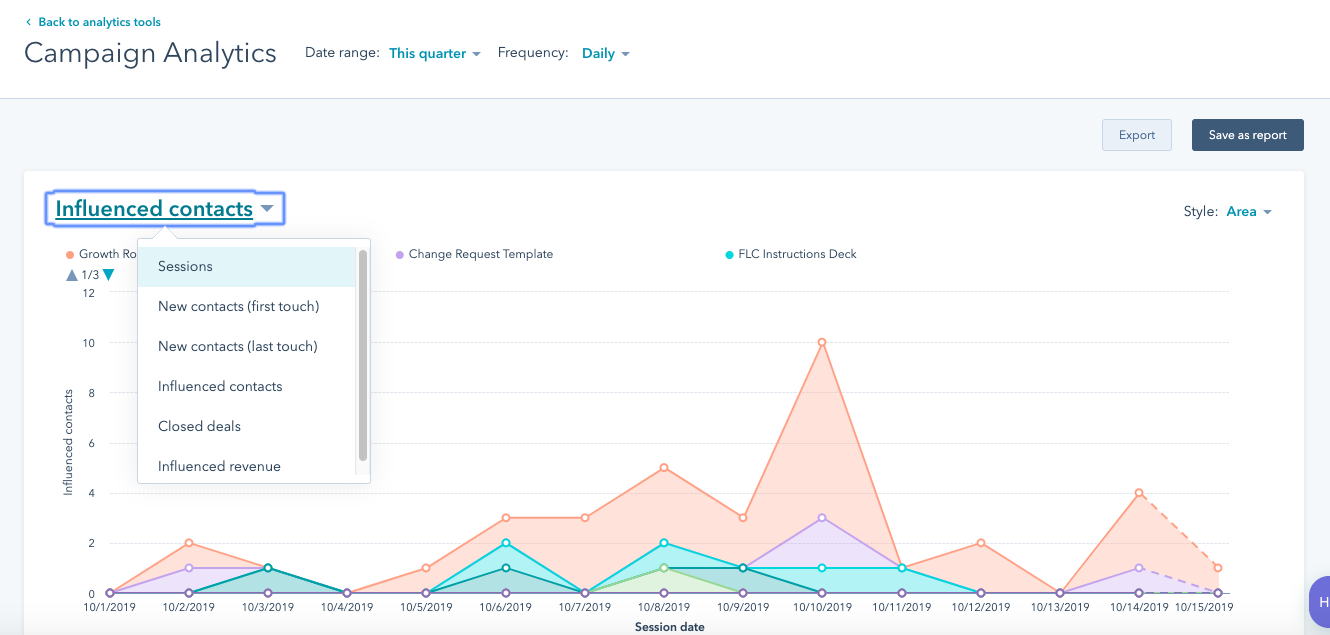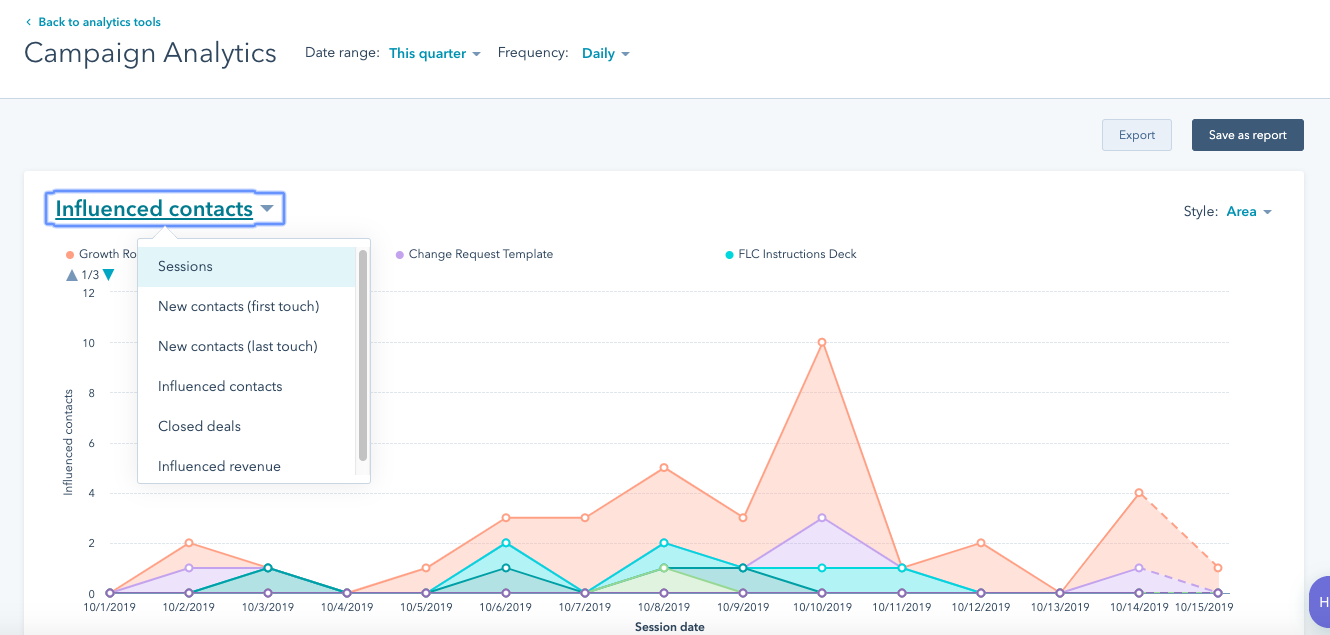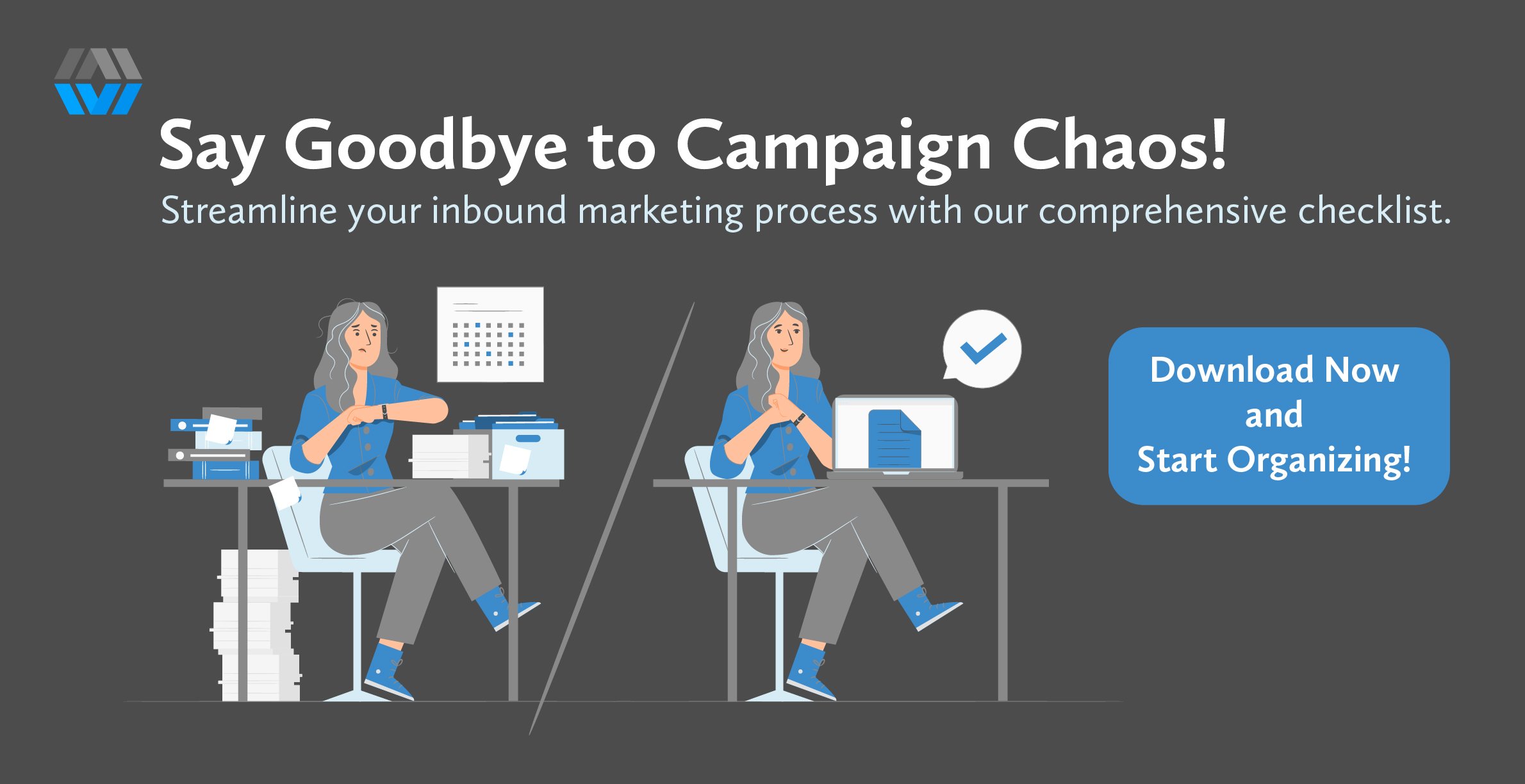Do You Run Inbound Marketing Campaigns?
If you're responsible for generating leads and turning them into sales, you're probably under a lot of stress. Whether you're working in a startup or in an established business, you know lead generation is not just a challenge, but critical to the survival of your business.
Learn what it takes to setup and execute a successful Inbound Marketing Campaign. Grab a copy of our Inbound Marketing checklist so you have a roadmap.
Been There, Done That
You see, I am also responsible for generating enough leads to feed my sales team, as I am the owner of SAP BW Consulting, Inc., an Hubspot Inbound Marketing Agency, and I've been generating leads and closing deals using Inbound Marketing and Sales since 2011 for my own company, which specializes in SAP BW upgrades and implementations.
My Inbound Marketing Journey
When I started out on my own Inbound Marketing journey and now Inbound Marketing Agency, it was because I had been advised to by the SAP MENA (Middle East, Northern Africa) Director of Marketing.
You see, as a Senior SAP Industry Principal, with responsibility for demand generation across a variety of industries, I was under tremendous pressure to keep my pipeline full. Specifically, I needed to keep 3 times (3x) as much 'pipeline deal value' in my Sales Pipeline as my annual Sales Quota for net new SAP license sales.
Why Should You Care About Pipeline?
Whether you know it or not, there's a conversion rate between opportunities and sales, in just about every business you can imagine. Sometimes, you know it from your own business experience, other times, you're trying to figure it out. To keep my pipeline full, and get that nice annual bonus check, which went up considerably when I exceeded my Sales Quota, I had to do a lot of lead generation. Up until that point, around 2008, almost all of my leads had come from networking and speaking at public events.
Marketing Events Were Getting Expensive and Yielding Less
One of my major activities was 'manning the booth' at marketing events. These events could be small scale affairs or huge multi-day events like GITEX. Though ostensibly put on by marketing, they relied upon us SAP experts to speak to potential clients. That means not only was SAP paying for an event, it was manning it with expensive consulting resources, like say, a Senior Industry Principal, such as myself.
Decreasing Return from Events
What we were noticing was an ever decreasing return from these events in terms of lead generation. In one of the last events I sponsored from my own marketing budget bucket, we spent around $50,000 and only generated 9 leads. It was a success in that we had hoped to make contact with the CEO of the soon to be UAE railroad company, which we did. But at $5,500 a lead, I thought there had to be a cheaper way.
Inbound Marketing - A Lower Cost Alternative
As it turns out, my marketing director had a cheaper way, and it was called Inbound Marketing. At that time, SAP was pivoting its already extensive marketing efforts to more of an Inbound approach, and they had me watch a demonstration of the Hubspot Inbound Marketing platform, which had only been in the market for a few years and was still very immature. SAP would later on actually become a Hubspot customer.
The Magic Of Getting Prospects To Find You
When my brother and I decided to launch SAP BW Consulting, Inc. in 2011, we had to decide which marketing strategy to implement. As part of our business planning process, we initially performed a thorough competitor analysis and found the field to be crowded. I knew this already, as I personally had 59 SAP partners I had been working with during my time in SAP MENA.
SAP Partners Rely on SAP Generated Leads
I also knew that most, if not all of these SAP Partners, relied heavily on the leads being generated and fed to them by SAP itself, as that is the SAP business model. Unfortunately, becoming a SAP partner was an expensive proposition, and we were bootstrapped as a company. Besides, the flow of SAP consulting opportunities was more than enough to keep food on the table.
Various Marketing Approaches
After examining the competitive landscape, we then explored various marketing approaches, ranging from just networking, to physical events, print, and many others, but then I remembered what my marketing director had said, which was, "do more Inbound Marketing" . That's when we made the fateful decision to sign-up for Hubspot and I took on the Marketing Director role while still doing some SAP delivery and of course, closing deals.
Content May Be King, But Strategy Rules Them All
As SAP consultants and business professionals with decades of experience in industries as diverse as the military, automotive, logistics, consumer packaged goods, utilities, well drilling, construction and many more, we didn't have marketing material.
Expertise is Our Ace in the Hole
What we had was expertise. Once we had stood up our basic SAP BW Consulting, Inc. website and performed basic SEO work on it, and learned the basic Inbound Marketing Methodology model, we began to produce content, lots of it. We did not outsource the production of any of our content, as it was both extremely expensive to have done by an outsider, while having it done by people with backgrounds similar to ours, almost an impossibility.
Coherent Content Strategy
We didn't always get it right, because we didn't have a totally coherent content strategy. By that I mean, (remember, the Inbound Marketing methodology as well as Hubspot was still brand new at this time), we didn't have an overall content plan. We'll revisit this issue shortly.
Many Customers Need Content Produced
For many of Hubspot's customers, they have neither content nor the ability to produce it on their own. For us, we could produce a lot of it, as we had many, many SAP projects from which to draw inspiration.
Content Golden Rule - Make It So Useful, They Would Pay For It
As a SAP Industry Principal, I was a quota carrying sales guy. Which was a new hat for me to wear, as I am actually a SAP Project Manager, not usually considered a sales job, though you might be surprised at how often you end up selling more software just to get the job done.
Teach to Sell
My primary "Sales Technique", if you could call it that, had always been to "teach". Sounds odd, why would potential customers need to be taught by the guy trying to sell them software. The short answer is, SAP is an extremely comprehensive, complex solution that no one person can know. Customers, especially when I first started out in 1999, simply did not know either the questions nor the expected answers. There isn't enough time in a customer's day to learn it all. Some even had me writer their RFPs (Request for Proposals). Therefore, teaching is often times the key sales technique.
How to Do Content as Go To Content Strategy
This is also the 'content strategy' I've always used, any content I produce is created to teach a customer more about how to do something. When it comes to Inbound Marketing, I often times find customers recording our online conversations, so they can review it. At first, when I noticed this, I thought my customer's were trying to catch me out on something I was saying or demonstrating as 'wrong'. But no, the feedback is that the content is so valuable, they wanted to record it before I started charging for it. Thus, make your content so valuable they would pay for it!
Share Content Generously
What all this really means is that I've always gotten better results by sharing what I know than by hiding it or trying to charge for tidbits out of the gate. Others may disagree, but it seems to work for our business model.
Productizing My Service Is Difficult
Like many professional service providers, I've come to the realization that I need to productize at least some part of my service offering. The challenge is, deciding which part. Productizing a service almost by definition means narrowing your offering and potentially, your market. After all, how would you package onsite SAP project management? (Hint: you don't).
Help Customers Productize
The difficulty of productizing my service has led to developing deep expertise in helping my clients package their service offerings. This exercise is oftentimes a much more effective approach when it comes to developing an effective content strategy, one of the keys to Inbound Marketing success.
Holistic Sales and Marketing Process
In fact, productizing a service is a great exercise to undertake as it forces you to design a complete, top-to-bottom sales and marketing process. You may have noticed that it is very, very complicated to 'buy something' from companies such as SAP or Accenture. They sell very complex software and services, which usually means there is complex scoping and contracting involved. Yet it is very simple to buy something from Amazon, including Amazon web services.
Be Easier to Buy From
Why might huge companies like SAP or Accenture keep making themselves difficult to buy from, while others, like Amazon, built sales machines that disrupt entire industries? There's at least one straightforward answer: constant testing. It is claimed that Amazon, at any given time, may have 1500 tests going on. That's 1500 hundred times you can hear from a customer. Then iterate. As it happens, Amazon is one giant content machine. As an experienced Amazon seller, I can assure you, you either write content for your items for sale on Amazon that complies 100% with their Style Guidelines, or your listing will be suppressed. Good luck trying to get help finding help.
Why So Picky About Their Content Standards?
The short answer is money. Their platform is designed to turn clicks into cash. They spend millions of dollars on getting their customers to a particular listing. They know what each visitor is worth, and thus, what a click cost to generate. If your content doesn't convert, there is almost always a competitor whose content will. That's how you have to treat your visitors. Each and everyone has a value associated with it.
Inbound Marketing is Bigger Than Content
I've spent a lot of time talking about the importance of high quality content. Today's customer has extraordinarily high expectations when it comes to content quality. They want interactivity, they want to know a lot more than they did before and they want to be entertained. That's why content creation is a key part of a successful Inbound Marketing Campaign. But it's not the only key to success.
Content Must Be Part of a Marketing Campaign
When we first started out, our Hubspot Onboarding Consultant kept referring to Campaigns. The problem was, Hubspot didn't have a campaign tool. They had all the individual tools it takes to set up a campaign, just no way to tie it all together. A few years later, they introduced the campaign tool, and it was like a light bulb lit up!
It's All Tied Together Now
Now we could see everything and how it related to each of the elements in a campaign. What are the elements of a successful Inbound Marketing Campaign?
- Knowing your 'buyer persona' is the starting point, for without it, you don't really know who you're creating your offer for.
- Having a clearly defined sales process and knowing exactly what you're selling. This is a surprisingly hard thing to do.
- Having a goal for the content. You should have numerical expectations as far as expected visitors, number of conversions expected, and ultimately, the revenue each piece of content is expected to generate or contribute to.
- A piece of content, which can be a downloadable piece of content or an online tool of some sort, such as a calculator or scoping tool. There are a huge number of possibilities when it comes to content.
- A Landing Page with a form. This is how you will collect leads and is critical for capturing and managing contacts.
- Lead nurturing emails and lists to drive leads through your system by offering them additional, related, relevant, contextually aware, content.
- Workflows that are used to drive the emails triggered by the lists. It can also be used to trigger calls, set values, and in general, is one of the most useful tools you have in your marketing stack.
- Blog posts to drive traffic to your offer. There's a lot goes into writing high performance blog posts. But done right, and in sufficient volume, they are one of the primary drivers of organic traffic to your site.
- A Social Media presence to which you can use your Inbound Marketing platform to publish your blogs and share your offerings.
- Budget for paid advertising. If you're just starting out, it is highly unlikely you're going to get much 'free' organic traffic. You're going to need to boost your traffic with paid advertising. Remember, there are a multitude of channels where you could advertise, but probably only one or two where it will make sense for your particular buyer.
- Analytics. With a platform like Hubspot, you will find analytics are built into every element of the Inbound Marketing process.
The analytics provided is highly tailored to what you will need to monitor and improve your Inbound Marketing campaigns. However, we also always implement Google Analytics, Facebook's Pixel and LinkedIN tracking. It usually takes all of these to answer the questions our customers have. But the Hubspot Analytics are generally the most useful.
How Do You Tie Multiple Campaigns Together?
If you only had to offer one piece of content in one Inbound Marketing campaign, there would be no need to tie campaigns together. However, if you're like us, and so far, all of our Hubspot Inbound Marketing customer's seem to be somewhat like us, you may have more than a hundred campaigns. We, in fact, have almost 400 pieces of content (and related campaigns) available on our site.
There isn't really a convenient way to relate one campaign to another within the campaign tool itself.
Content Cluster Strategy
However, if you first develop a content strategy (using the Hubspot content cluster template provided for this purpose), then you will know how your content is related. There is, however, a way to see how one campaign is working to support the goals of other campaigns within the platform via the campaign analytics tool. You can see a narrowed down view of a few campaigns we've run in the image below.
Your Funnel is Really a Flywheel
One of the reasons why you want to use the campaign analytics tool is because, though you may design your 'sales funnel' using a top-to-bottom approach, the reality is, your customers will enter your sales funnel from just about every conceivable point. That's why today, you should imagine your sales funnel as more of a flywheel, or better still, a whirlpool.

Running an Inbound Campaign Successfully
With a deep background in aviation, as both a pilot, flight engineer and mechanic, I am used to using checklists. What is a checklist? It is more than a random list of things to do. It's a sequential set of activities that must done in a specific order to achieve success. That's why we've developed a checklist you can use on your Inbound Campaigns. Just click the button to get your copy.
About SAP BW Consulting, Inc.
SAP BW Consulting, Inc. is a niche consulting firm specializing in SAP Business Intelligence solutions. We offer expert SAP Business Warehouse (SAP BW) consulting and implementation support, as well as comprehensive SAP consulting across all 16 core SAP modules and 31 industry solutions. Our services include advanced SAP ABAP development and full project management support to ensure your SAP initiatives run smoothly and efficiently.
In addition to SAP services, we are a certified HubSpot Marketing and Sales Partner, leveraging the HubSpot Inbound Methodology to help businesses generate leads and boost sales. We also provide Salesforce consulting to manage complex environments that integrate SAP, HubSpot, and Salesforce.
Ready to take your SAP and marketing operations to the next level? Book a meeting with us today to explore how we can support your business goals.




